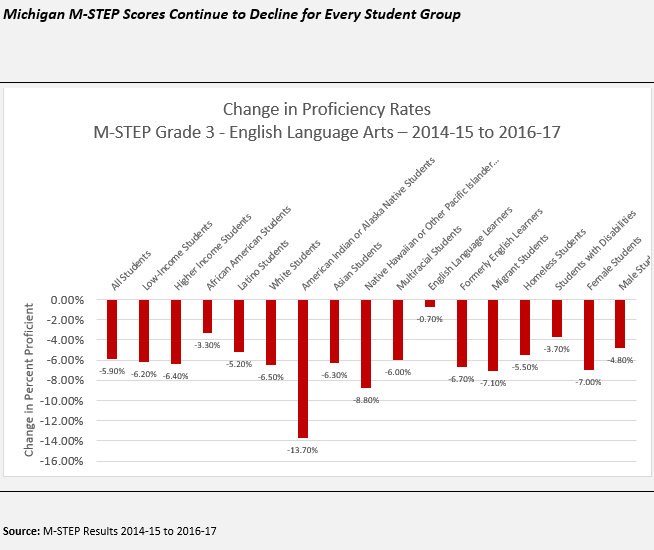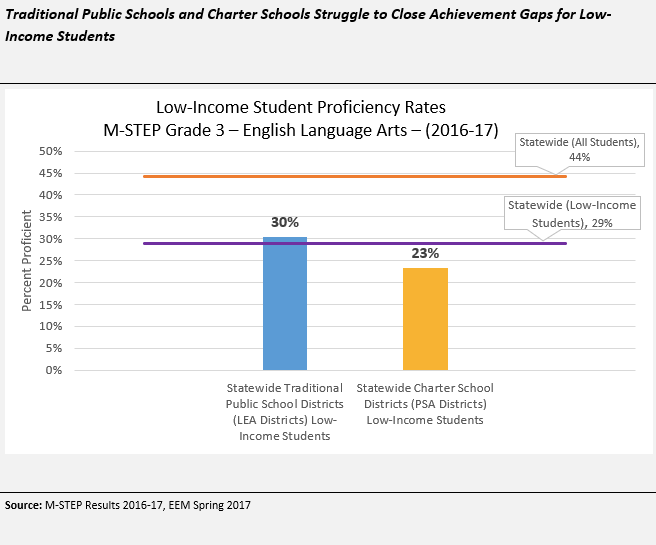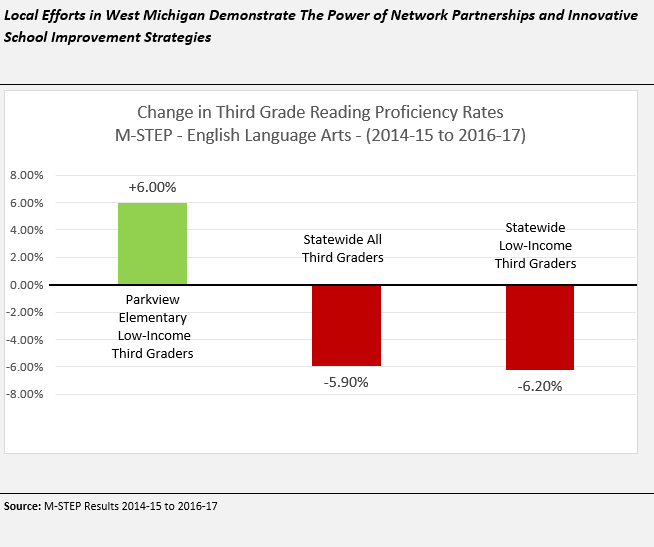Leveraging the Power of Data for Strategic Learning and Improvement
A recently released report by The Education Trust-Midwest leveraged the power of comparative state assessment data to provide fresh insight on Michigan’s early literacy performance. The results were troubling and become more so, as we further explore the data.
The new report found that Michigan third-graders are the lowest performing students in the U.S. among states in the same assessment consortium. And that over the past three years, while many other states made improvements, Michigan’s third-grade reading proficiency rates showed the greatest decline.
But the details matter the most. For example, not only are Michigan student scores dropping across the board, but they are actually declining for every single group of students – low-income and higher-income, Latino and Black, male and female.

Similarly, statewide early literacy rates for low-income students are low in both traditional public schools and charter schools, as both sectors struggle to raise student achievement and close gaps.

While these data trends tell a concerning story about Michigan’s education direction, they do not need to be Michigan’s story for years to come. Instead, we can leverage research and data to look both within and beyond Michigan’s borders for opportunities to learn from successful improvement efforts.
Within Michigan, we can celebrate and learn from some of the state’s highest improving, high-poverty schools. Data from an innovative network of high-poverty schools in West Michigan is showing promising results for students and proving that dramatic school improvement is possible with the right systems, leadership, and strategies in place. Working in partnership with the Center for Excellence in Teaching and Learning, and others, educators at network schools in Grand Rapids Public Schools and Wyoming Public Schools have leveraged data to identify areas for improvement, effectively implement school-level systems and initiatives, and strengthen the instructional capacity of their colleagues.
Data from Parkview Elementary, in Wyoming Public Schools, one of the network’s elementary schools, shows the power of these strategies in improving third grade reading proficiency for low-income students.

Outside Michigan, we can learn from leading states like Tennessee and Alabama that are demonstrating that fast progress in early literacy is possible at a state level. Both states leverage innovative human capital strategies to ensure educators statewide are equipped to use the latest research and instructional practices in their classrooms. And data from both states show these strategies can have dramatic effects on student achievement. Tennessee and Alabama have both seen major learning gains over the past 15 years – especially for African American students.
Similar dramatic learning gains are possible in Michigan, too. By leveraging the power of data and research to identify and learn more about effective improvement strategies, and by empowering our educators to implement these strategies effectively, Michigan can better support its early readers moving forward.

